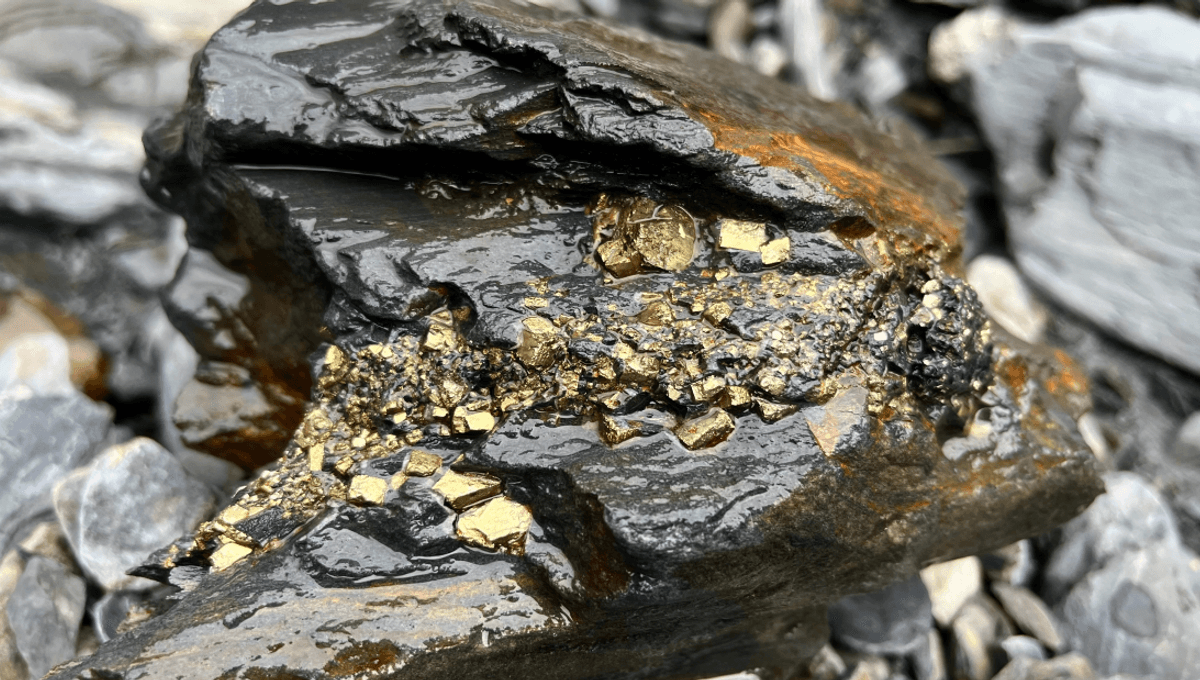
The glittering golden hue of a cracked lump of pyrite gives false promises of riches for a rock that’s not really all that valuable – but a new announcement suggests there could be more to “fool’s gold” than meets the eye. Pyrite sampled from the United States was found to contain a surprising amount of the chemical element lithium (Li), something the world is in dire need of if we’re going to fuel the battery revolution.
Pyrite’s association with lithium “is unheard of” said Shailee Bhattacharya, a sedimentary geochemist and doctoral student working with Professor Shikha Sharma in the IsoBioGeM Lab at West Virginia University, in a statement. They will present their team’s findings at the European Geosciences Union (EGU) General Assembly 2024.
Their study focused on 15 middle-Devonian sedimentary rock samples from the Appalachian basin in the United States. Analyses revealed that there was a surprising amount of lithium in pyrite minerals in shale, which was an unexpected result.
“I am trying to understand how lithium and pyrite could be associated with one another,” said Bhattacharya.
The surprise discovery was made during an investigation into whether old industrial sites could be a source of lithium. Such sites could include mining tailings, which are the by-product lumps of minerals left behind when the target mineral has been extracted.
It turned out that pyrite minerals in shale were a particularly good source of lithium, which could be great news for the battery revolution – but the team urges not to get too excited just yet. This is because we don’t yet know if the findings are site-specific, meaning pyrite everywhere might not contain as much lithium as the samples tested in this study.
Shining a light on potential new sources of lithium – also known as “white gold” – is big news in the modern era, as the world looks to battery production for a greener future. Lithium is highly reactive, allowing it to store and release electrical energy efficiently, but as it stands, we’re going to need a lot more of it to move ahead with sustainability plans.
“We currently produce around 100,000 tonnes [of lithium] each year,” explained Data scientist at Oxford University Hannah Ritchie in a blog oist titled “Does the world have enough lithium to move to electric vehicles?” .
“By 2030, the IEA projects that we’ll need 2.5 to 5 times as much: 240,000 to 450,000 tonnes.”
In short, it seems scarcity isn’t so much the problem as our capacity to produce it, so new potential sources like humble ole’ pyrite could be very good news indeed. Better yet, finding white gold in this way could even be the greenest solution.
“While the primary ores of Li (pegmatite, salar brine, and volcanic-associated clay) are generally well-understood, it would be desirable to identify additional Li sources that could be safely and economically exploited,” wrote the researchers in their abstract. “Using material from previous industrial operations (e.g., mine tailings or drill cuttings) as a source of additional Li would be attractive as it would generate little or no new waste material.”
The team will present their findings at the EGU General Assembly 2024.
Source Link: Fool’s Gold May Actually Be More Valuable Than We Realized